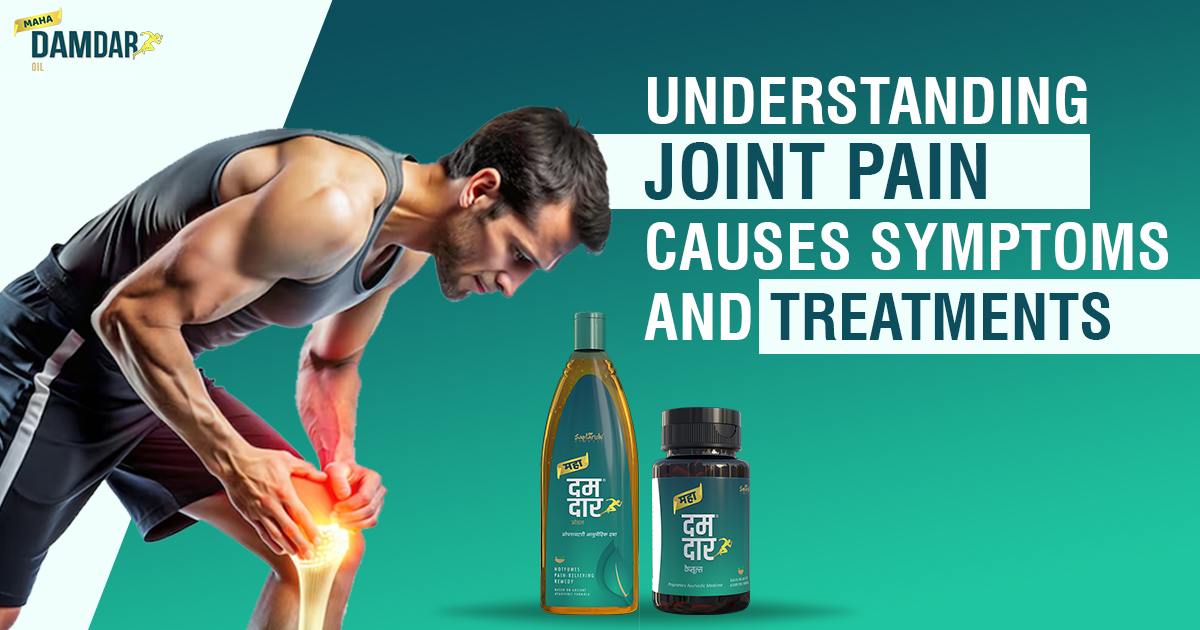Understanding Joint Pain: Causes, Symptoms, and Treatments

Our bones can’t function well without well-functioning joints. And what indicates that your joints aren’t well? Joint pain. This is the sinister thing that can hit you at any time.
What Causes Joint Pain?
When you talk about joint pain, it’s necessary to understand that every pain doesn’t come from a single source. Bones, cartilage, muscles, and ligaments make up joints, and any problem with these parts can result in pain and discomfort. Likewise, there are several other causes of joint pain such as:
Trauma or Injury
An accidental fall, trauma, and injury can cause joint pain. It can be a sports injury, a trauma from a simple misstep, or a workout sprain. Strain to the joint can cause inflammation, resulting in pain and soreness. The only respite is that most joint pain that is related to injury goes away with time and adequate care.
Bone problems
Fractures, strains, or dislocations of the bone can cause joint pain.
Chondritis
Inflammation of the cartilage due to injury may cause joint pain.
Bursitis
Bursae are the cushions between the joints and muscles and tendons. Sometimes these small fluid sacs or bursae get inflamed leading to joint pain. Bursitis happens due to overuse or repetitive movements like when you practice the same exercises daily or sit for hours in one position without proper ergonomic seating.
Arthritis
Arthritis is one of the common causes of joint pain. Arthritis is commonly of two types. One is osteoarthritis, the usual cause of which is wear and tear. With time, the cartilage of the joints tears down, resulting in bones rubbing against each other. This rubbing causes pain and stiffness, especially as we age.
The second is RA or rheumatoid arthritis. It is an autoimmune disorder that causes inflammation and pain. It may sometimes cause deformity of the joints. This may affect at any age and its symptoms spate up and down gradually.
Gout is yet another complex form of arthritis. It happens when uric acid crystals are formed in the joints, causing excruciating pain. It mostly occurs in the big toe. Poor diet, family history, certain medications, and medical conditions such as diabetes, obesity, kidney disease, etc., can cause an increase in uric acid leading to gout.
There are other causes of joint pain like infections, stress, or even bad posture can add to joint pain.
Symptoms of Joint Pain
The symptoms of joint pain that you experience may depend on the causes and can affect your daily life. Out of the variety of symptoms, some common ones associated with joint pain are:
Rigidity or stiffness: Tightness of the joint like they got stuck in a place, typically after being in a position for a long. This can be felt when you wake up in the morning or sit for a long time.
Swelling: Joint inflammation is often accompanied by swelling. The painful region gets puffy than usual and feels bumpy to the touch.
Decreased range of motion: It becomes painful to move the joints. Sometimes the range of motion gets limited to the extent that it becomes difficult to bend or straighten the joints, making daily activities of living difficult.
Warmth and Soreness: Inflammation brings warmth and redness to the painful joint, a common condition in arthritis or gout.
Instability and lack of strength: Weakening of the joints with lack of strength and instability is often complained by people with joint pain. This can be alarming during any physical activity.
Treatments for Joint Pain
Depending upon causes and symptoms, joint pain is treated. There are several ways to manage the pain and keep it from disturbing your life.
An icy break: Take rest and allow the joint to heal. Ice can assist in reducing the soreness by numbing the pain area. Ice can help if applied in the first 24 to 48 hours of injury.
Pain relief medication: Anti-inflammatory medications can be effective on mild to moderate pain. They can be a quick fix but need to be taken under medical supervision only.
Stretching: If the joint pain is due to inactivity, light stretching can help. Light stretching exercises activate and strengthen the muscles around the joints, improving flexibility. You can practice any stretching exercise such as yoga or tai chi as per your preference.
Ayurvedic joint pain oil: This is a natural remedy for soothing your joints. Joint pain relief oils are prepared to improve inflammation, relax muscles, increase blood flow to the area, and support joint flexibility. Regular massage with ayurvedic pain relief oil keeps the pain at bay.
Physical Therapy: If nothing is helping go for physical therapy. Therapists recommend targeted exercises to increase flexibility, and build strength, and that may help in the reduction of pain.
Food habits: Include spices and herbs such as ginger, turmeric, and Boswellia in your diet for their anti-inflammatory properties. If you are a nonvegetarian, you can go for fish that are rich in omega-3 fatty acids, or else you can opt for nuts and seeds that are rich in omega-3. For those suffering from gout, stay away from all the foods that are high in purines as they increase uric acid levels such as red meat, sugary foods, and alcohol.
Lifestyle reformation: Lastly, making modifications to your habits can make a big impact. Wear supportive shoes and use comfort-design furniture to reduce the ongoing stress on your joints.
Wrapping it Up
Joint pain can be mild or severe and can be caused due to various reasons. It’s not wise to ignore the symptoms of joint pain as it can aggravate and worsen the problem. There are several treatment methods to manage joint pain including pain medications and physical therapy. Ayurvedic joint pain relief oils are natural ways to get joint pain relief as they are prepared with natural herbs, making them safe. If the joint pain persists, it’s better to get a consultation from a registered medical practitioner.
